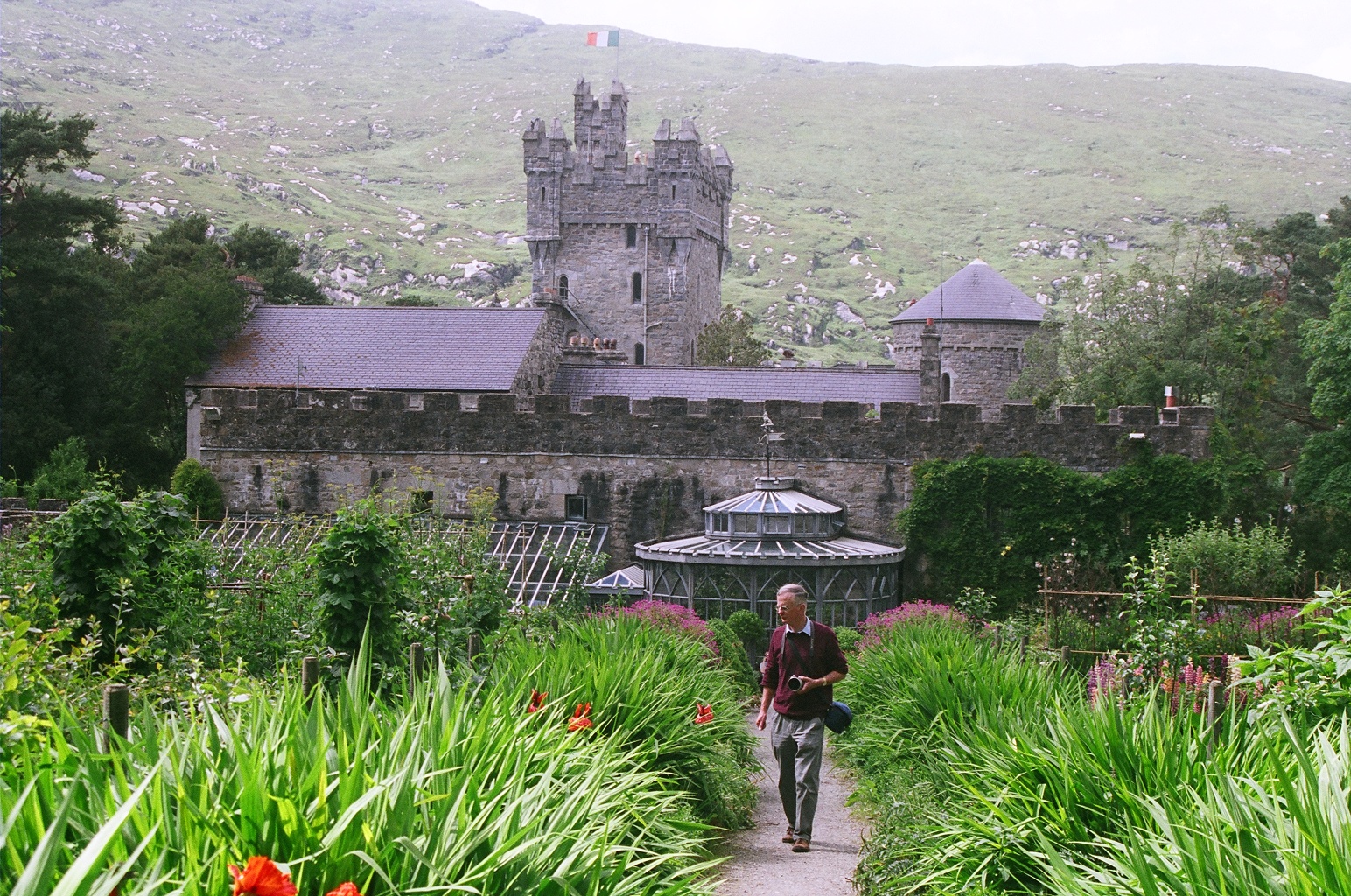Glenveagh on:
[Wikipedia]
[Google]
[Amazon]
Glenveagh ( ; ) is the second-largest

National Parks WebsiteGlenveagh National Park Website
In Depth History of Glenveagh
{{authority control Important Bird Areas of the Republic of Ireland National parks of the Republic of Ireland North Atlantic moist mixed forests Protected areas established in 1986 Glenveagh National Park 1986 establishments in Ireland
national park
A national park is a nature park designated for conservation (ethic), conservation purposes because of unparalleled national natural, historic, or cultural significance. It is an area of natural, semi-natural, or developed land that is protecte ...
in all of Ireland
Ireland (, ; ; Ulster Scots dialect, Ulster-Scots: ) is an island in the North Atlantic Ocean, in Northwestern Europe. Geopolitically, the island is divided between the Republic of Ireland (officially Names of the Irish state, named Irelan ...
. Located in County Donegal
County Donegal ( ; ) is a Counties of Ireland, county of the Republic of Ireland. It is in the Provinces of Ireland, province of Ulster and is the northernmost county of Ireland. The county mostly borders Northern Ireland, sharing only a small b ...
, it includes: Glenveagh Castle and its grounds; Lough Veagh; and much of the Derryveagh Mountains. National parks in Ireland
Ireland (, ; ; Ulster Scots dialect, Ulster-Scots: ) is an island in the North Atlantic Ocean, in Northwestern Europe. Geopolitically, the island is divided between the Republic of Ireland (officially Names of the Irish state, named Irelan ...
conform to IUCN standards. As of 2024, Glenveagh is the only national park anywhere in Ulster, the northern province
A province is an administrative division within a country or sovereign state, state. The term derives from the ancient Roman , which was the major territorial and administrative unit of the Roman Empire, Roman Empire's territorial possessions ou ...
in Ireland.
Geography
The park covers 170 square kilometres and includes much of the Derryveagh Mountains, Lough Veagh and Glenveagh Castle on its shores. The castle gardens display a multitude of exotic and delicate plants.
History
Captain John George Adair (1823–1885), anAnglo-Irish
Anglo-Irish people () denotes an ethnic, social and religious grouping who are mostly the descendants and successors of the English Protestant Ascendancy in Ireland. They mostly belong to the Anglican Church of Ireland, which was the State rel ...
businessman, built Glenveagh Castle and founded the Glenveagh estate. Adair came into dispute with his Irish Catholic
Irish Catholics () are an ethnoreligious group native to Ireland, defined by their adherence to Catholic Christianity and their shared Irish ethnic, linguistic, and cultural heritage.The term distinguishes Catholics of Irish descent, particul ...
tenants over hunting and fishing rights and trespassing sheep. During the 1861 famine, Adair evicted 44 families (224 people total) from their blackhouse
A blackhouse ( ; ) is a traditional type of house which used to be common in Ireland, the Hebrides, and the Scottish Highlands.
Origin of the name
The origin of the name blackhouse is of some debate. On the Isle of Lewis, in particular, it ...
s on his land, earning him the nickname "Black Jack Adair".
The estate passed to his wife Cornelia Adair. It was then bought by Arthur Kingsley Porter in 1929, before being bought by Henry Plumer McIlhenny
Henry Plumer McIlhenny (October 7, 1910 – May 11, 1986) was an American connoisseur of art and antiques, world traveler, socialite, philanthropist, curator, and chairman of the Philadelphia Museum of Art.
Early days
McIlhenny attended Harvard ...
in 1937. McIlhenny bequeathed Glenveagh to the Irish state in the 1970s, but continued to use the castle as a part-time residence until 1982.
The park is home to the largest herd of red deer
The red deer (''Cervus elaphus'') is one of the largest deer species. A male red deer is called a stag or Hart (deer), hart, and a female is called a doe or hind. The red deer inhabits most of Europe, the Caucasus Mountains region, Anatolia, Ir ...
in Ireland and the formerly extirpated
Local extinction, also extirpation, is the termination of a species (or other taxon) in a chosen geographic area of study, though it still exists elsewhere. Local extinctions are contrasted with global extinctions.
Local extinctions mark a chan ...
golden eagle
The golden eagle (''Aquila chrysaetos'') is a bird of prey living in the Northern Hemisphere. It is the most widely distributed species of eagle. Like all eagles, it belongs to the family Accipitridae. They are one of the best-known bird of pr ...
were reintroduced into the park in 2000. In winter 2018 and spring 2019, many native and non-native trees and plants were cleared from the park, and the water and pipe system was updated.
See also
*List of loughs in Ireland
This is an alphabetical list of loughs (lakes) on the island of Ireland. It also shows a table of the largest loughs. The word ''loch, lough'' is pronounced like ''loch'' () and comes from the Irish language, Irish ''loch'', meaning ''lake''.
Acc ...
* List of tourist attractions in Ireland
The following list includes the tourist attractions on the island of Ireland which attract more than 100,000 visitors annually. It includes attractions in both Northern Ireland and the Republic of Ireland.
Multi-county destinations/routes
* The W ...
References
External links
National Parks Website
{{authority control Important Bird Areas of the Republic of Ireland National parks of the Republic of Ireland North Atlantic moist mixed forests Protected areas established in 1986 Glenveagh National Park 1986 establishments in Ireland